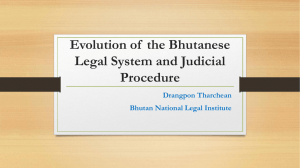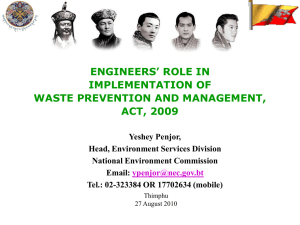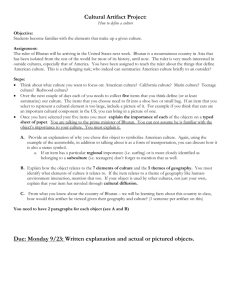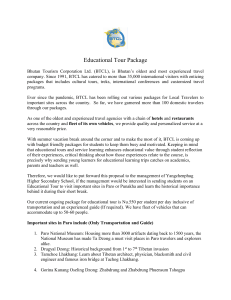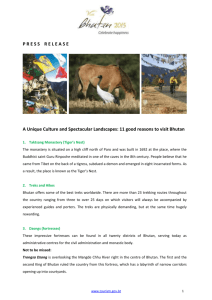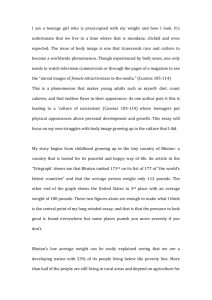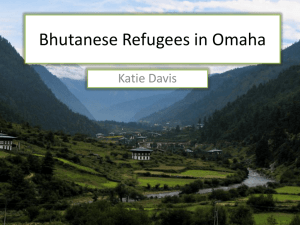Bhutan
advertisement
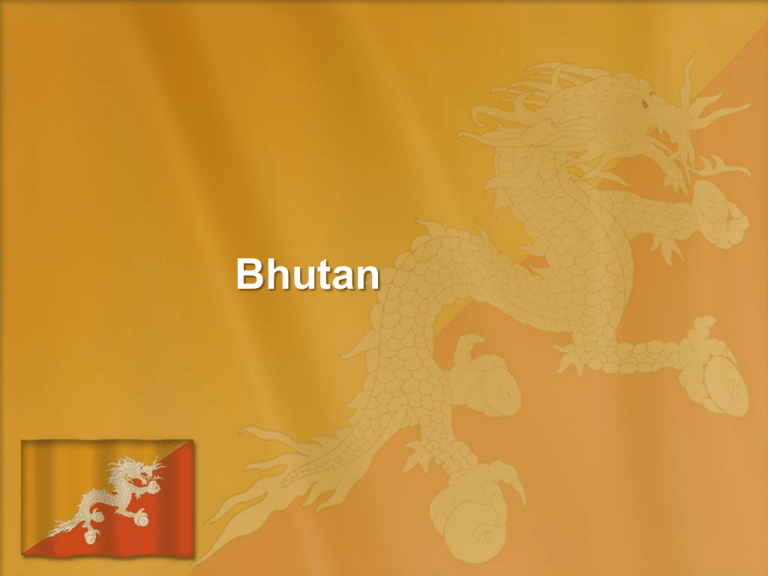
Bhutan Background • The Kingdom of is a landlocked country in South Asia, located at the eastern end of the Himalaya Mountains and bordered to the south, east and west by the Republic of India and to the north by the Tibet Autonomous Region of the People's Republic of China. Bhutan is separated from the nearby state of Nepal to the west by the Indian state of Sikkim, and from Bangladesh to the south by West Bengal. The Bhutanese called their country Druk Yul which means "Land of Dragon". • Bhutan used to be one of the most isolated countries in the world. Developments including direct international flights, the Internet, mobile phone networks, and cable television have increasingly modernized the urban areas of the country. Bhutan balanced modernization with its ancient culture and traditions under the guiding philosophy of Gross National Happiness (GNH). Fervent protection of the environment has been a top priority. The government takes great measures to preserve the nation's traditional culture, identity and the environment. In 2006, Business Week magazine rated Bhutan the happiest country in Asia and the eighth-happiest in the world, citing a global survey conducted by the University of Leicester in 2006 called the "World Map of Happiness" Background • Area: 14,824 sq. mi. • Population: 691,141 (2009 est.) • GDP per capita (PPP): $5,212 Gangkhar Puensum from Ura La, Bhutan Trongsa Dzong Dzong Courtyard Tashichoedzong, Thimphu, seat of the Bhutanese government since 1952 Punakha Dzong Punakha Dzong Jacaranda trees in Bhutan National Memorial Chorten Terraced farming in the Punakha valley Haa Valley in Bhutan Religions Religions of Bhutan religion percent Buddhism 75% Hinduism 24% Others 1% The Taktshang Monastery, (Buddhist) also known as the "Tiger's Nest". Monks Prayer Flags and Prayer Wheels Prayer Flags Changlimithang Stadium, during a parade for the king’s birthday.. Chaam, sacred masked dances, are annually performed during religious festivals. Shop in Paro, Bhutan TRONGSA DZONG FESTIVAL • The Trongsa Dzong was built by Chogyel Minjur Tempa, the Third Desi, in 1648 A.D. It is presently the administrative seat of the district and home of the monastic school. Built at split-levels on a narrow spur, the Dzong is an architectural wonder. Attending the 3-day festival, you gain merit and religious purification; be immersed into medieval Bhutan and the enchanting Bhutanese culture. Here one can truly appreciate the essence of Bhutanese people and a preserved steadfast culture. Arrays of colorful brocades whirl through the air as the dancers spin and dance the "thunderbolt step". Masks of glorious demonic demons and animals arouse your senses as purification takes place. The intensity goes on; your spirit will fly.
